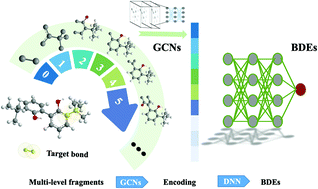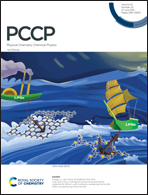A general QSPR protocol for the prediction of atomic/inter-atomic properties: a fragment based graph convolutional neural network (F-GCN)†
Abstract
In this study, a general quantitative structure–property relationship (QSPR) protocol, fragment based graph convolutional neural network (F-GCN), was developed for the prediction of atomic/inter-atomic properties. We applied this novel artificial intelligence (AI) tool in predictions of NMR chemical shifts and bond dissociation energies (BDEs). The obtained results were comparable to experimental measurements, while the computational cost was substantially reduced, with respect to pure density functional theory (DFT) calculations. The two important features of F-GCN can be summarised as: first, it could utilise different levels of molecular fragments for atomic/inter-atomic information extraction; second, the designed architecture is also open to include additional descriptors for a more accurate solution of the local environment at atomic level, making itself more efficient for structural solutions. And during our test, the averaged prediction error of 1H NMR chemical shifts is as small as 0.32 ppm, and the error of C–H BDE estimation is 2.7 kcal mol−1. Moreover, we further demonstrated the applicability of this developed F-GCN model via several challenging structural assignments. The success of the F-GCN in atomic and inter-atomic predictions also indicates an essential improvement of computational chemistry with the assistance of AI tools.

- This article is part of the themed collection: Emerging AI Approaches in Physical Chemistry


 Please wait while we load your content...
Please wait while we load your content...